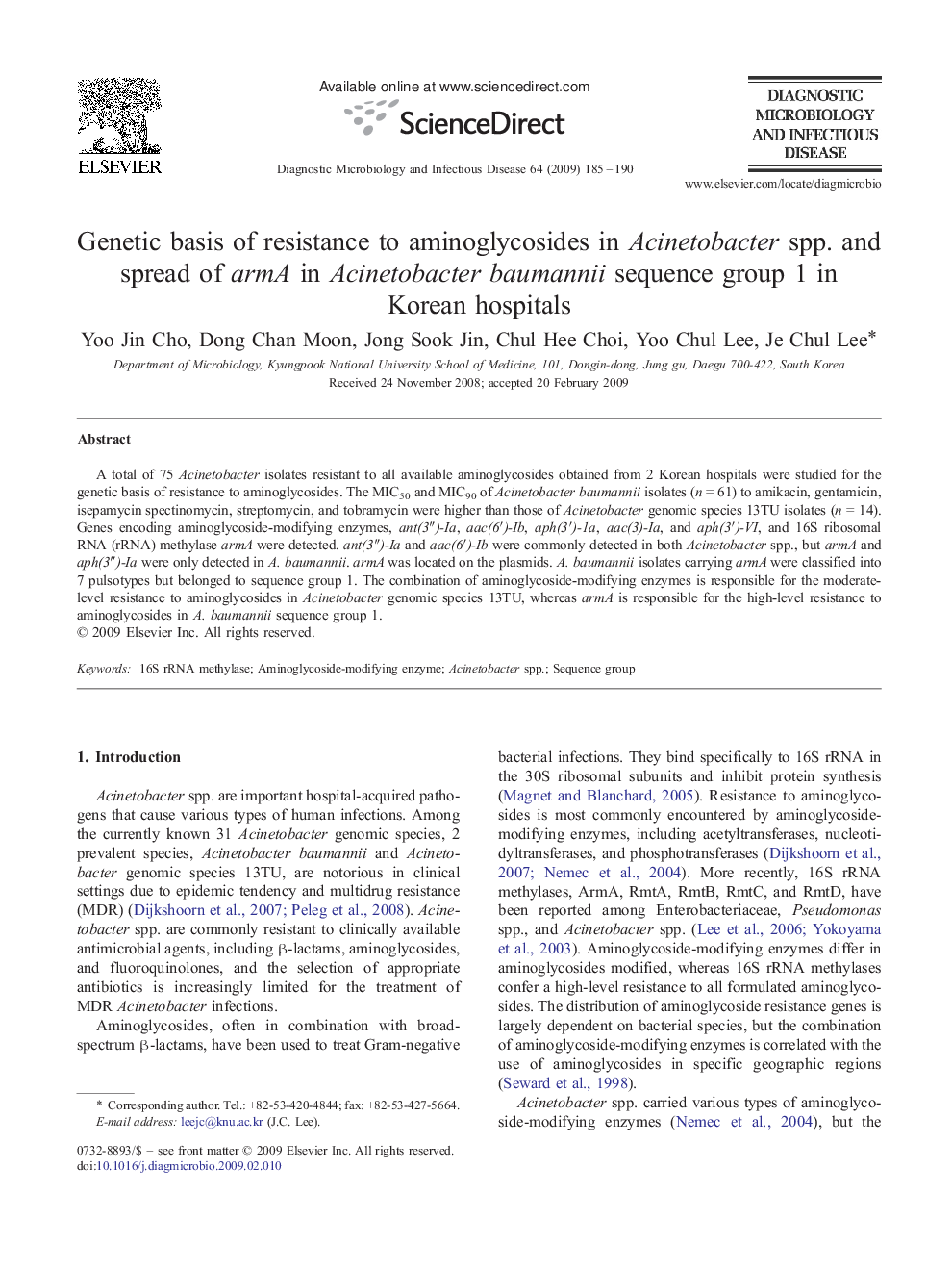| Article ID | Journal | Published Year | Pages | File Type |
|---|---|---|---|---|
| 3348423 | Diagnostic Microbiology and Infectious Disease | 2009 | 6 Pages |
A total of 75 Acinetobacter isolates resistant to all available aminoglycosides obtained from 2 Korean hospitals were studied for the genetic basis of resistance to aminoglycosides. The MIC50 and MIC90 of Acinetobacter baumannii isolates (n = 61) to amikacin, gentamicin, isepamycin spectinomycin, streptomycin, and tobramycin were higher than those of Acinetobacter genomic species 13TU isolates (n = 14). Genes encoding aminoglycoside-modifying enzymes, ant(3″)-Ia, aac(6′)-Ib, aph(3′)-1a, aac(3)-Ia, and aph(3′)-VI, and 16S ribosomal RNA (rRNA) methylase armA were detected. ant(3″)-Ia and aac(6′)-Ib were commonly detected in both Acinetobacter spp., but armA and aph(3″)-Ia were only detected in A. baumannii. armA was located on the plasmids. A. baumannii isolates carrying armA were classified into 7 pulsotypes but belonged to sequence group 1. The combination of aminoglycoside-modifying enzymes is responsible for the moderate-level resistance to aminoglycosides in Acinetobacter genomic species 13TU, whereas armA is responsible for the high-level resistance to aminoglycosides in A. baumannii sequence group 1.
